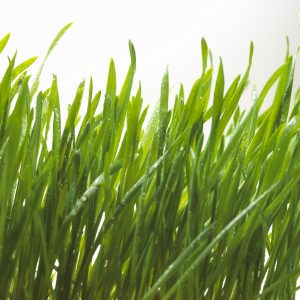Essential Tips for When to Cut Your Lawn in Spring

With the arrival of spring, the landscape transforms, signalling a time of renewal and growth. For many homeowners, this season is a call to action, a time to invest in the health and beauty of their lawns. Early spring care is pivotal in setting the tone for the vitality of your yard through the warmer months. Read on for our top tips and essential practices for preparing, treating, and maintaining your lawn in spring, including the optimal time to mow and water your lawn.
How to Prepare Your Lawn for Spring
Kickstart your lawn’s recovery with a thorough inspection. Look for areas of compaction, thatch buildup, or any signs of disease and pest infestation. Addressing these issues early can prevent problems from escalating as the season progresses.
A clean slate is crucial for healthy growth, so it’s important to rake your lawn to remove leaves, sticks, and other debris that may have accumulated over the winter months. This not only tidies up your yard but also prevents mold and disease while ensuring sunlight and air can efficiently reach the grassroots.
Testing your soil’s pH can reveal a lot about its condition. Grass prefers a slightly acidic to neutral pH. If your soil is too acidic or alkaline, consider amending it with lime or sulfur-based on the test results. A healthy soil pH ensures that nutrients are readily available to your grass. Our expert lawn care professionals can help conduct this inspection and tailor a plan based on your specific lawn conditions and environment.
How to Treat Your Lawn in Spring
Applying a balanced, slow-release fertilizer early in the season supports growth and greenness, but timing can be crucial to get the best out of this process. Be mindful of the type of grass you have, as cool-season and warm-season grasses have different nutrient needs.
Target common spring weeds by applying an herbicide when the soil temperature consistently reaches about 55 degrees Fahrenheit. Pre-emergent herbicides can save you a lot of trouble down the line by preventing weeds before they start.
When to Water Your Lawn in Spring
In early spring, lawns require less water due to cooler temperatures and occasional rain. Monitor the weather and adjust your watering schedule accordingly to select the optimum time of day. A good rule of thumb is to water when the top inch of soil becomes dry. It’s important to remember that overwatering can be as detrimental as under-watering.
Early morning watering reduces evaporation and wind interference, ensuring water penetrates deep into the soil. This encourages deeper root growth, making your lawn more resilient.
When Should You Start Mowing Your Lawn in Spring
The first cut of the season is critical. Wait until your lawn reaches about 3 inches in height before you start cutting the grass in spring. This patience allows the grass to strengthen and ensures a healthy start.
Another top tip is to adjust your cutting height. Initially, set your mower to the highest setting to avoid shocking the grass. Cutting the grass too short too soon can lead to a weaker lawn that’s more susceptible to weeds and diseases. As spring progresses, gradually lower the mower setting but never cut more than a third of the blade at once.
Creating a Mowing Schedule
Consistency is key. A regular mowing schedule encourages a thick, healthy lawn that can outcompete weeds. Adjust your mowing frequency based on growth rate, which is influenced by weather, watering, and fertilization. It’s also a good idea to leave the clippings on the lawn as they decompose, as they add valuable nutrients to the soil. However, avoid leaving large clumps of clippings, as they can smother the grass beneath.
Call Our Lawn Care Professionals
Caring for your lawn in the spring sets the stage for a beautiful outdoor space year-round. It’s a labor of love that pays off in the form of a lush, vibrant lawn. Remember, the key to a healthy lawn lies in consistent care and attention to detail, and sometimes, despite your best efforts, your lawn may face challenges beyond the scope of regular maintenance.
Our team of lawn care professionals is ready to step in with specialized knowledge and equipment to address any issue, from pest control to advanced fertilization techniques. Every lawn is unique, and our services are customized to meet its specific needs. We can help fine-tune your lawn care regimen, ensuring your lawn reaches its fullest potential!
Essential Tips for When to Cut Your Lawn in Spring in Orlando FL and surrounding counties
Serving satisfied customers in:


